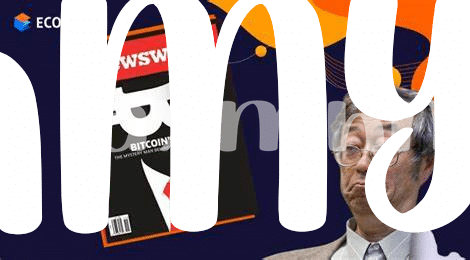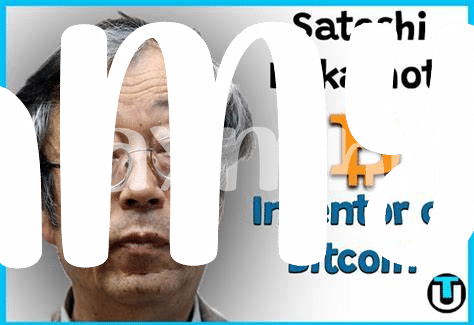Unwrapping the Mystery: Who Is Satoshi Nakamoto? 🕵️

Picture a world where money isn’t controlled by big banks or governments but by the people using it. This dream started taking shape in the mind of a person, or perhaps a group of people, known under the pseudonym Satoshi Nakamoto. Their true identity remains one of the digital age’s most enticing riddles 🕵️. Despite countless attempts by journalists, tech experts, and curious minds, Satoshi has managed to stay in the shadows, their anonymity intact. Imagine someone creating a groundbreaking technology and then just walking away, leaving behind only their invention and a few digital footprints. That’s exactly what Satoshi did after introducing Bitcoin to the world. Their only communication was through emails and forum posts, even those stopped in 2010. The mystery of Satoshi isn’t just about finding out who they are but understanding their vision of a decentralized economy and how they managed to trust the world with it, without wanting any credit or fame. Their identity is shrouded in mystery but what matters more are the ideas and principles they set for the future of money.
| Date | Event |
|---|---|
| 2008 | Satoshi Nakamoto publishes the Bitcoin White Paper |
| 2009 | Bitcoin network comes into existence |
| 2010 | Last known communication from Satoshi Nakamoto |
The Genesis of Bitcoin: a Revolutionary Idea 🌟
Imagine a world where money can move around the globe in the blink of an eye, without needing a bank or government to oversee it. That was the revolutionary idea that sparked the birth of Bitcoin. At the heart of this vision was Satoshi Nakamoto, a name wrapped in mystery. Satoshi brought to life a concept that seemed like something from a science fiction novel—digital money that you could send to anyone, anywhere, without having to go through a middleman. This wasn’t just about creating a new kind of money; it was about reshaping the very foundation of how financial transactions could be done.
With this groundbreaking idea, for the very first time, people had a form of money that was completely digital and operated on trust generated by technology, not institutions. It promised to level the playing field, giving power back to the people. The impact of this idea was monumental, setting off a chain reaction that would go on to inspire countless other digital currencies and new technologies. Amidst this journey, challenges were many, but the belief in a decentralized financial future kept the dream alive. Speaking of navigating the modern digital economy, saving money on transactions can also be crucial for enthusiasts. Check out how to do just that here.
The White Paper: Blueprint of a New Digital Economy 📄

In 2008, something amazing happened. A person, or maybe a group of people, under the name Satoshi Nakamoto shared a document online 📄. This wasn’t just any document. It was a plan for a whole new kind of money, one that lives on the internet and doesn’t need banks or governments to make it work. Imagine sending money to a friend on the other side of the world, just as easy as sending a text, and without having to pay big fees or wait days for it to arrive. That’s what this plan, known as a “white paper,” showed us how to do.
This idea didn’t just dream up a new kind of money; it suggested a new way of handling all kinds of important stuff online, from voting to keeping records 🌐. The brilliance of Satoshi’s vision laid in the blend of technology, economics, and a dash of rebellious spirit, aiming to make the digital world a better place for everyone. As people around the globe began to catch on, they realized this wasn’t just about creating “digital cash.” It was about building the groundwork for a new digital economy, where the power didn’t rest in the hands of a few, but was shared by all.
Satoshi’s Legacy: Beyond Just a Digital Currency 💡

When we think about Satoshi Nakamoto, it’s easy to get caught up in the allure of Bitcoin as the first digital currency. But, the true magic of Satoshi’s work stretches far beyond just creating an online type of money. It’s about laying the groundwork for a new kind of economy, where transactions can zip across the globe without getting tangled in the usual web of bank fees and slow processes. Imagine a world where sending money is as easy and fast as sending a text message. That’s the vision Satoshi gifted us. Through the invention of Bitcoin, Satoshi sparked a conversation on the true meaning of value and trust in a digital age. For a deeper dive into what determines bitcoin’s price and the blockchain, there’s plenty to uncover. Satoshi’s legacy is like a seed that has grown into a mighty tree with branches stretching into different innovations and sparking new technologies. From enhancing privacy to creating decentralized digital identities, the ripple effect of Satoshi’s work is reshaping our digital landscape 🚀🌐.
Challenges Faced and Overcome by Satoshi 💪
Creating Bitcoin wasn’t a walk in the park. Imagine trying to convince people to believe in and use money that’s not printed by governments or stored in traditional banks. That’s exactly what Satoshi Nakamoto faced. In the early days, the idea of a digital currency independent of any authority seemed like a daydream. Skepticism wasn’t the only hurdle. Satoshi also had to ensure that this new form of money couldn’t be hacked or cheated. That means coming up with a super secure and fair system that no one, not even Satoshi, could manipulate. It was a tall order, but through genius coding and a bit of digital magic, Satoshi pulled it off.
| 🚧 Challenge 🚧 | 🔧 Solution 🔧 |
| Skepticism from Public | Transparent, open-source platform |
| Security Risks | Introduction of Blockchain Technology |
| Risk of Manipulation | Decentralized System, no single point of control |
But Satoshi’s journey wasn’t over. After laying the groundwork, there was still the challenge of adoption. Getting people, businesses, and eventually even governments to consider Bitcoin as a viable currency took years of advocacy, development, and demonstration of its real-world utility. Despite these obstacles, Satoshi’s resolve never wavered, setting the stage for a financial revolution that continues to unfold today.
The Ripple Effect: How Satoshi Changed the World 🌍

When someone crafted the ideas behind Bitcoin, it started more than just a wave; it sparked a revolution. Every nook and corner of our world felt the echo, changing how we view money, transactions, and the very fabric of our economic systems. It wasn’t just about creating a new form of currency but more about presenting the world with the power of decentralized financial systems. This vision empowered people by giving them control over their finances without the need for traditional intermediaries like banks. As more individuals and businesses embraced this concept, we saw a shift in how people approached investments, privacy, and financial autonomy.
This transformation has paved the way for innovations we hadn’t even dreamt of. From everyday transactions to creating a sandbox for developers to build new digital experiences, the impact is profound and far-reaching. Moreover, the curiosity it sparked about digital currencies led to an avalanche of questions, research, and interest from all corners of the globe. For those curious about diving into this digital economy, understanding the first steps is crucial. For a friendly guide on starting, consider reading how does bitcoin compare to gold for beginners. This comparison not only sheds light on the basics but also helps newcomers grasp the essence of what makes digital currencies a unique asset class, providing a stepping stone into a new financial paradigm.
